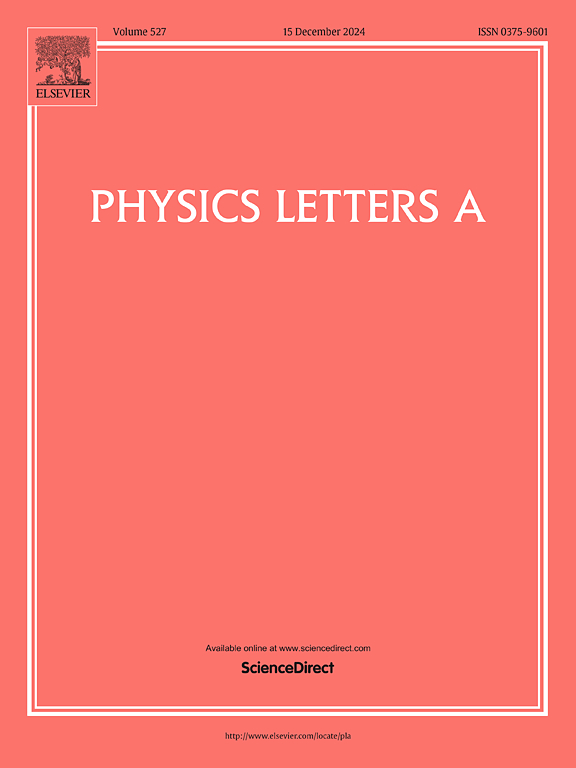Triple ultraviolet to visible perfect absorptions of lifted metamaterial for highly sensitive sensing and slow light
IF 2.3
3区 物理与天体物理
Q2 PHYSICS, MULTIDISCIPLINARY
引用次数: 0
Abstract
Achieving multiple perfect absorptions from ultraviolet (UV) to near-infrared (IR) region is practically important for metamaterial-based efficient harvesting of photons and biosensor. Here, we theoretically demonstrate a triple narrow and broad perfect absorptions (PAs) from visible to UV range in a lifted metamaterial made of aluminum vertical split-ring resonators (Al VSRR) on silica nanostrip /Al mirror. The three simultaneously achieved narrowband and broadband PAs with bandwidth of 283.3 nm, 8.9 nm and 18.2 nm are excited from magnetic plasmon resonance, surface plasmons polariton and plasmon standing wave mode, respectively, which is further explained by the impedance matching theory. The triple-band absorption peaks are further tailored by changing the size of the structure. The group index of the lifted Al VSRR array can reach as large as 2.5 × 103 in the UV range. Moreover, due to the designed metamaterial being lifted with the reduced substrate effect, the figure of merit (FoM*) and sensitivity (S) in the UV range are as high as 1.1 × 106 and 306 nm per refractive index unit (306 nm/RIU), respectively. The proposed lifted metamaterial could have a considerable effect on the development of various UV plasmonic applications, including slow light nanodevices and optical sensor.
用于高灵敏传感和慢速光的三重紫外线到可见光完美吸收提升超材料
实现从紫外线(UV)到近红外(IR)区域的多重完美吸收对于基于超材料的光子高效收集和生物传感器具有重要的现实意义。在这里,我们从理论上证明了在硅纳米带/铝镜上由铝垂直分裂环谐振器(Al VSRR)构成的升降式超材料中实现了从可见光到紫外光范围的三重窄宽完美吸收(PAs)。同时实现的三个带宽分别为 283.3 nm、8.9 nm 和 18.2 nm 的窄带和宽带吸收峰分别由磁等离子体共振、表面等离子体极化子和等离子体驻波模式激发,阻抗匹配理论进一步解释了这一现象。通过改变结构的尺寸可以进一步调整三波段吸收峰。在紫外范围内,提升后的 Al VSRR 阵列的群指数可高达 2.5 × 103。此外,由于所设计的超材料在提升时减小了基底效应,因此在紫外范围内的优点系数(FoM*)和灵敏度(S)分别高达 1.1 × 106 和 306 nm/折射率单位(306 nm/RIU)。所提出的升降超材料可对各种紫外等离子体应用(包括慢光纳米器件和光学传感器)的发展产生重大影响。
本文章由计算机程序翻译,如有差异,请以英文原文为准。
求助全文
约1分钟内获得全文
求助全文
来源期刊

Physics Letters A
物理-物理:综合
CiteScore
5.10
自引率
3.80%
发文量
493
审稿时长
30 days
期刊介绍:
Physics Letters A offers an exciting publication outlet for novel and frontier physics. It encourages the submission of new research on: condensed matter physics, theoretical physics, nonlinear science, statistical physics, mathematical and computational physics, general and cross-disciplinary physics (including foundations), atomic, molecular and cluster physics, plasma and fluid physics, optical physics, biological physics and nanoscience. No articles on High Energy and Nuclear Physics are published in Physics Letters A. The journal''s high standard and wide dissemination ensures a broad readership amongst the physics community. Rapid publication times and flexible length restrictions give Physics Letters A the edge over other journals in the field.
 求助内容:
求助内容: 应助结果提醒方式:
应助结果提醒方式:


